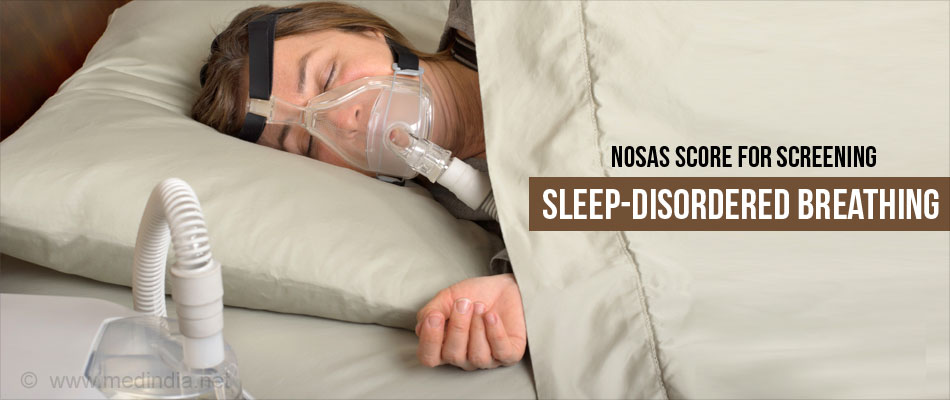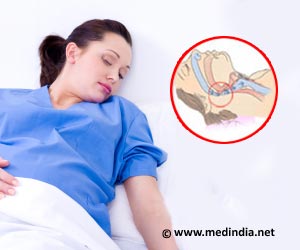
- The polysomnography test used to diagnose sleep-disordered breathing like obstructive sleep apnea is a time consuming and expensive test
- The NoSAS is a validated screening tool that helps to identify individuals at high risk of sleep apnea
- Only individuals with a score of 8 and above need further testing with polysomnography
The test thus requires a full night to be spent at the sleep center. It may not be widely available and is expensive. Therefore, researchers came up with a simple screening tool that could filter patients who are at a higher risk of sleep-disordered breathing, and may benefit from treatment following the polysomnography test.
The NoSAS score derives its name as an acronym from the parameters its scores, which are Neck circumference, Obesity, Snoring, Age and Sex. It allocates a maximum total of seventeen points based on the following parameters:
- Neck circumference of more than 40 cm: 4 points
- Body-mass index of between 25 kg/m2 and 30 kg/m2: 3 points
- Body-mass index of 30 kg/m2 or more: 5 points
- Presence of snoring: 2 points
- Age over 55 years of age: 4 points
- Male sex: 2 points
The researchers compared their score with the currently available scores, STOP-Bang and Berlin scores, and found that the NoSAS score worked better. The NoSAS score was also externally validated and showed good performance.
The NoSAS score is thus a simple score that could save several people from undergoing the time-consuming and expensive polysomnography test, which can be done only if necessary.
- Marti-Soler H et al. The NoSAS score for screening of sleep-disordered breathing: a derivation and validation study. The Lancet Respiratory Medicine DOI: http://dx.doi.org/10.1016/S2213-2600 (16)30075-3















